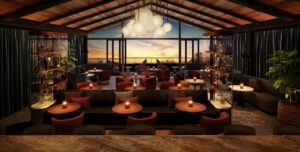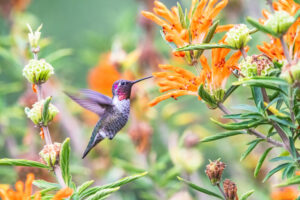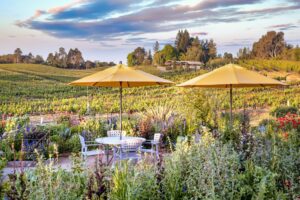Written and Photographed by Jim Nevill for The Press Democrat.
Photographers from around the world have Yosemite National Park firmly planted on the top of their bucket lists, with the naturally occurring “firefall” phenomenon among the most spectacular events to witness there. This year, between Feb. 15 and 19, I was able to photograph one of the most spectacular firefalls ever recorded, due in part to El Niño.
In mid-February each year, a celestial and terrestrial convergence occurs between the setting sun and Horsetail Falls, a 1,570-foot waterfall located on the eastern edge of Yosemite Valley’s famed climbing wall, El Capitan. The event is quite rare because it depends on simultaneous factors working in unison, like a wave that only breaks perfectly once a decade. This is the stuff that makes life so amazing.
The first factor: Horsetail Falls must be flowing. By comparison, Yosemite Falls is the world’s fifth tallest waterfall, fed by almost 32,000 acres of watershed. During the recent drought, Yosemite Falls dried up.
Horsetail Falls begins at an elevation of 6,100 feet and is fed by a small 30-acre area that lies between 6,200 and 7,600 feet. Even when there is enough snow, it might not be melting. When Horsetail Falls is not flowing, the firefall doesn’t happen.
The second factor is the angle of the sun in relation to El Capitan and Horsetail Falls, a term known as the “azimuth.”
Thanks to the intricate predictability of celestial movement, we know the sun will always be in the correct position for the firefall at some point during the second and third weeks of February. When the sun sets with an azimuth between 246° and 263°, sunlight will hit the falls.
SUN EFFECT
Solar events have influenced culture since the dawn of time. The sun was worshiped as a god because it is the ultimate energy source, guiding ancient societies like the Mayans and Aztecs when to plant their crops and repeat their religious ceremonies. The sun has the same effect today, sending hordes of professional and amateur photographers to Yosemite to see the show.
The third factor is the prow, or prominent front edge of El Capitan, which protrudes in such a way that a shadow is cast on the mountain’s entire eastern face at exactly sunset, except Horsetail Falls. The setting sun barely squeaks by during these few weeks in February and only when the cloud cover near the horizon allows it.
Which leads to the fourth factor, clouds. When the horizon is completely clear of clouds, the sunset light is typically orange. No clouds at all and good snow melt conditions, like a hot afternoon on a clear day, mean you’ll probably get lucky and see the typical orange glow of the firefall, which really does look like flames. Light or patchy clouds on the horizon and in the sky can create refracted sunlight and, when combined with atmospheric gasses, make intense pink, red or even purple sunsets.
Each year, despite being in the right place at the right time, hundreds of observers head back to their RVs and campsites disappointed because the sun never made its way through the clouds.
If you happen to be in Yosemite after a clearing storm and the clouds are sparse but present, you could be in for an epic firefall like the few I got to witness. That’s the “luck” factor.
I spent days leading up to my Yosemite trip visiting in-laws in Sacramento with my wife and two children, hoping that I wasn’t missing the best day of the year while watching Jimmy Fallon’s Valentine’s Special on the family couch. After it was over, I may or may not have exceeded the speed limit, getting to the valley before sunset on Monday, Feb. 15. My best shot of the trip came only minutes after my arrival that day.
ANGLE OF VIEW
The fifth and final factor is the angle from which you view the phenomenon. Much like a rainbow that can only be seen when you have the sun at your back, the firefall can only be experienced in all its glory when the sun is in an angled position relative to where you stand.
You can see the lighting of Horsetail Falls from many places in Yosemite Valley or from various locations on the South Rim, but my understanding is that the effect is amplified by the bounce effect created when light reflects off of the rock wall behind (through) the water and mist. This is why, in my opinion, windy conditions produce a more dramatic effect, greatly enhancing the spray.
Where to Stand: There are a few locations that attract many folks entering the park. Temporary street signs have been installed that now allow folks to park in the left lane of Southside Drive. Please avoid trampling sensitive areas or venturing into unmarked regions to view the falls. This is a pristine wilderness in addition to a being a tourist attraction. Also, for safety’s sake it is best to find vantage points that are on the valley floor or from established trails.
Respect the Park: More than 3 million people per year visit Yosemite. Please be respectful of your neighbors, the wildlife and the park itself to ensure future generations can enjoy it, too. Learn how to tread lightly here.
Tips for photographing the Firefall
Use a tripod, the best one you can afford. Since you will be shooting this scene in low light from a few thousand feet away, you will need to stabilize your camera if you want to come away with sharp results. I often weight my tripod down with my camera bag or a sandbag to prevent a breeze from moving the camera once it’s mounted.
Use a low ISO. Ideal is 100, or if your camera will do it, 64. This will require a longer exposure but will yield less grainy results as long as your tripod is stabilized and your camera is properly focused. Using the self-timer setting or a shutter release cable is always a good idea when taking low light photos.
Consider using a “critical aperture.” All lenses have a sweet spot. As a general rule, two stops from the widest aperture of your lens is the sharpest. If you have an f/2.8 lens, two stops would be f/5.6. If you have an f/5.6 lens, two stops would be f/11. A great way to find out what aperture is the sharpest is to test it. Google, “What is the sharpest aperture on a lens?” to find out how to test your lens.
Shutter speed will be determined by the light meter’s reading once you set your ISO and aperture; go with whatever properly exposes the scene. Every camera will be different based on the sensitivity of its sensor and the available light.
Metering. I used “spot” metering as opposed to “matrix” metering because I wanted to properly expose the waterfall light, not the whole scene as you would normally do in a landscape situation. The result of metering the falls rather than the whole scene means that the surrounding rock of El Capitan will be darker, which makes the waterfall light pop off the rock face.
To find out more technical information about the celestial positioning involved in taking photographs, check out the Photographers Ephemeris smartphone app.
___
Jim Nevill is a fine art landscape and surf photographer living in Northern California. As an outdoor enthusiast and wilderness guide, he has spent more than 20 years traveling the world, and his photographic portfolio chronicles the journey. Nevill also is the founder of Lifeschool, a nonprofit offering wilderness adventure trips to teens and schools. View his portfolio at JimNevill.com or on Facebook at Jim Nevill Photography.










